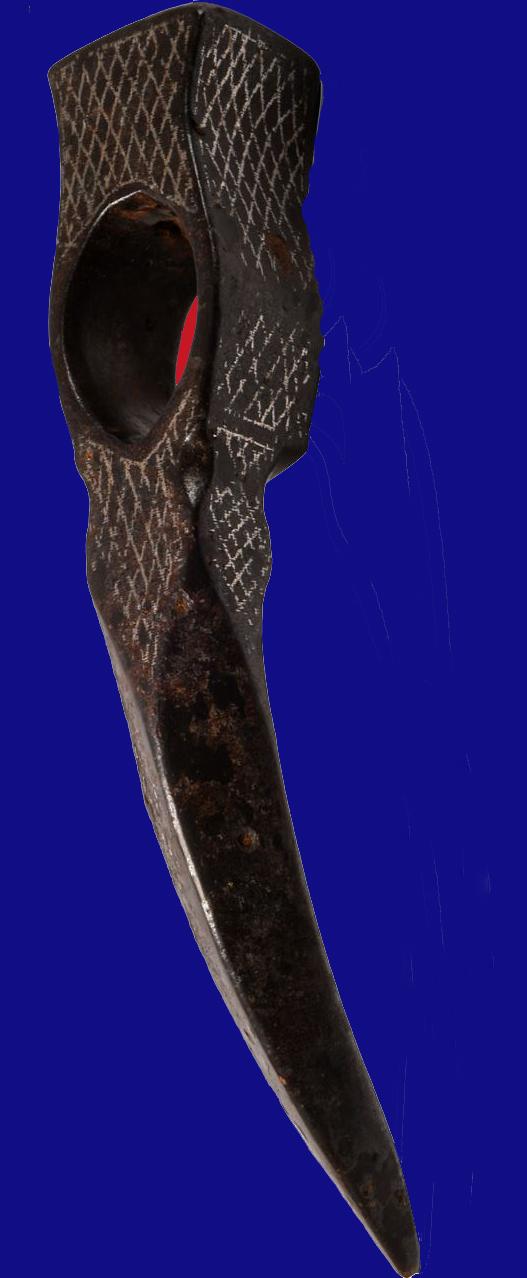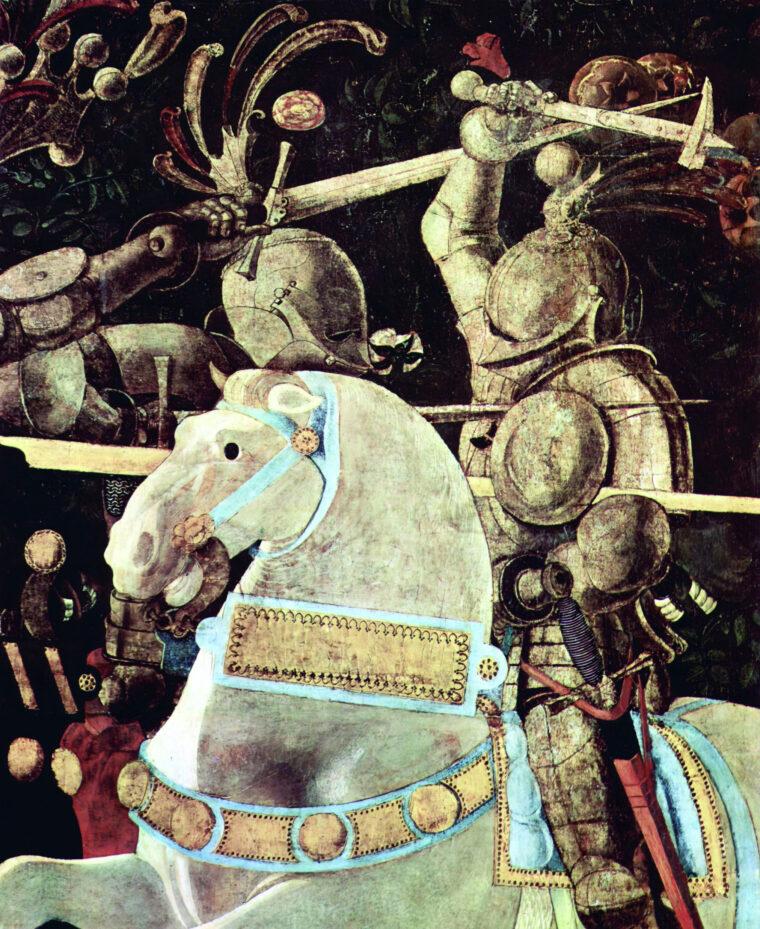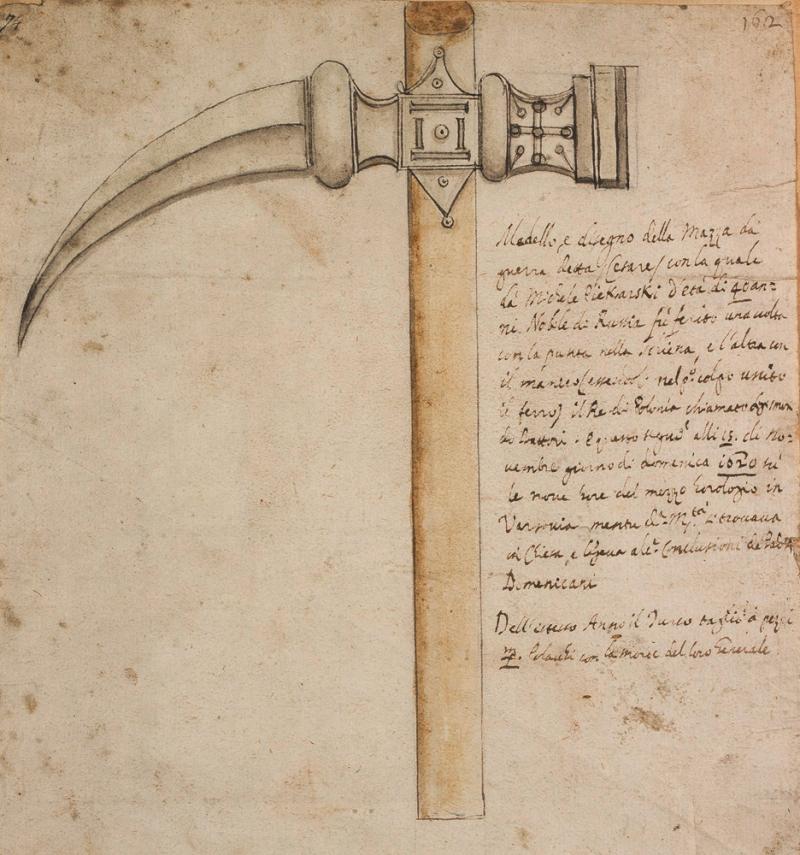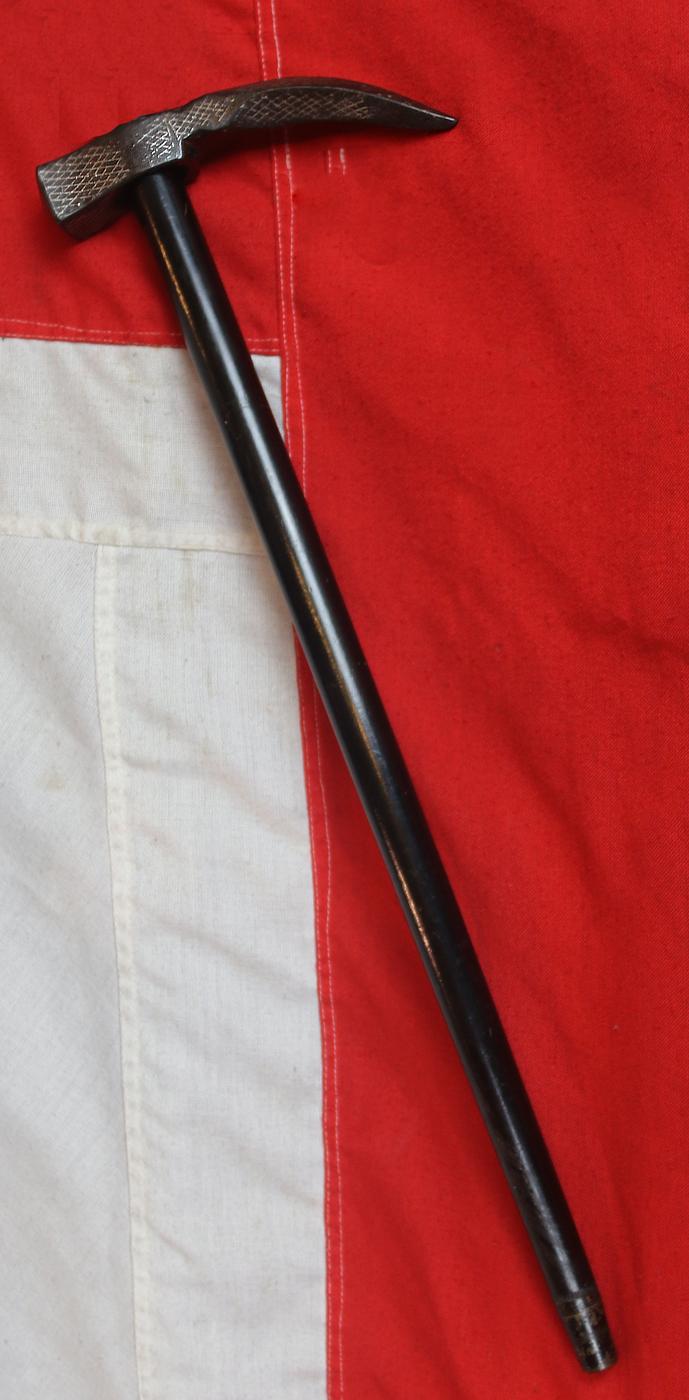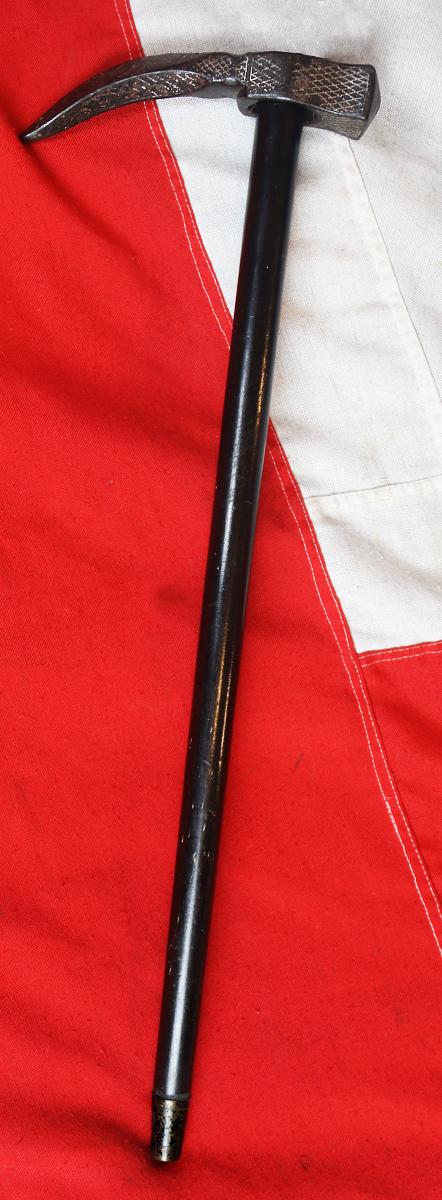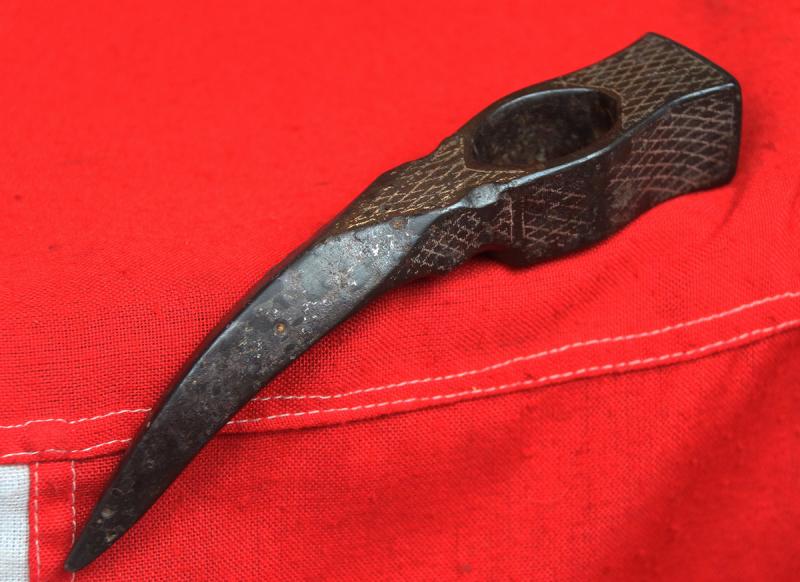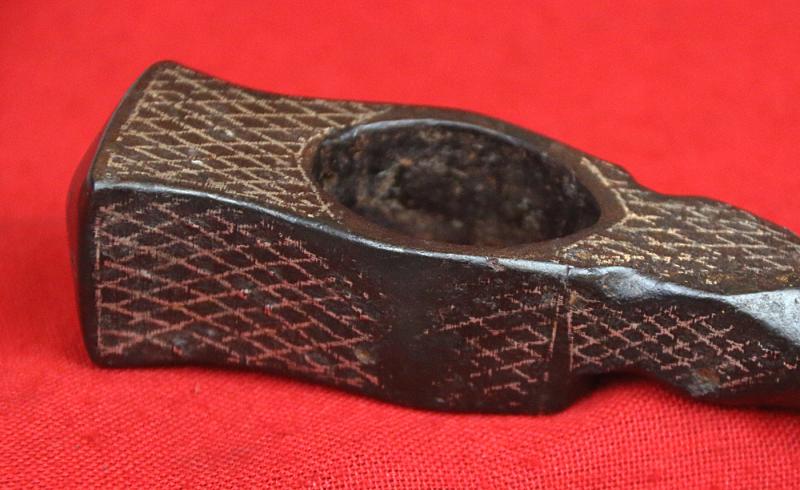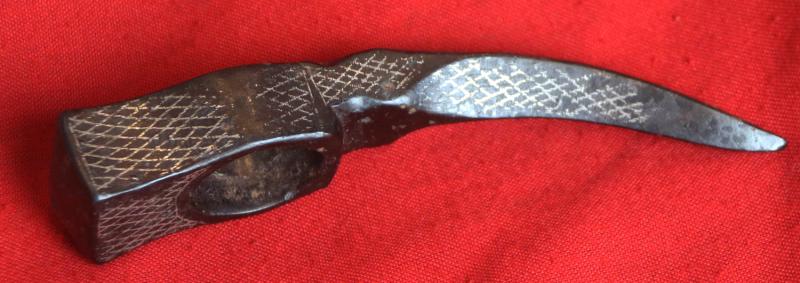A Most Fine Knightly Polish War-Hammer Nadziak or Obuch, 1500's A.D. Inlaid with Silver Cross Hatching. Certainly one of the Most Beautiful & Well Preserved We Have Ever Seen.
A fine early original war-hammer composed of an ovoid haft socket, a fierce downturned ‘tiger’s claw’ spike, and a square section hammer head, all inlaid with a stunning and intricate silver geometric design. Overall in superb condition for its great age.
We show it in the gallery with the form of haft it would have had, and indeed could do once more, but this one shown is for information only and not present or included
The name obuch is Polish and means 'the blind end of an axe', but already at the beginning of the 15th century it meant a unspecified war hammer. According to Polish sources of 17th century, the war-hammer could have been formed into the shape of an axe (czekan), or in the form of a thick, slightly sloping spike (nadziak), or curved like a round cracknel (obuch). A 17th century description states: 'It was a terrible instrument in the hand of a Pole...With the sabre one could cut off somebody’s hand, cut the face, injure the head, and the running blood of the adversary would calm down the rancour. But with the obuch one could cause a deadly wound without even seeing the blood, and – not seeing it – he would not calm down instantly, but would strike several times without cutting the skin, breaking ribs and bones at the same time.'
There is a stunning original drawing of a very similar example [we show a copy of it in the gallery] with a full description and how it was used in the attempted assassination of the king of Poland by Michal Piekarski in 1620.
The translation of the drawings text reads
:” a sledge hammer, a war hammer design called a 'Crane' with which Russian nobleman Michele [Michal] Piekarski, aged 40, wounded the King of Poland called Sigismund of Lithuania in the back with one blow of the hammer point and another of the hammer shaft (having used the metal for the first blow). This happened on Sunday the 15th of November 1620 at 9 ½ hours in Warsaw while his Majesty was in church studying the learnings of the Dominican Fathers. In June of that year [The King/the Hammer] cut to pieces .?. Polish people with the death of their earthly life.”
The drawing is perhaps the work of a political sympathiser in opposition to the Swedish annexation of Poland under Sigismund III Vasa as part of the Polish-Lithuanian Commonwealth.
By the end of the 16th century, the hussars had adopted enough armor to become a new, more agile heavy cavalry, using their trademark 18-foot light-long lance as their initial shock weapon. They sported breastplate, a mail shirt, forearm guards, thigh armor (cuirass), and an open-faced burgonet-like helmet called a zischaage. Total weight of a hussar’s armor was no more than 30 pounds. An animal-skin mantle, particularly leopard, was a showy form of identity and esprit de corps. Perhaps the most notable element of the latter array was the famous “wings” the hussars would sometimes wear—eagle wings attached to arching frames and a special support on their back armor or saddle. The rush of these wings during a charge was psychologically unnerving, and the extra height they gave riders was intimidating.
The war hammer was the hussars’ most common secondary weapon. Slung from the saddlebow, the early Polish hussar war hammer was of German and Italian design, with a long shaft. Two styles had names derived from Turkish. The czekan was a combination of hammerhead on one side and an ax on the other. The nadziak, perhaps the most popular war hammer, had a hexagonal head balanced by a long, slightly drooping beak.
By 1600, Polish hussars had bested all other cavalries thrown against them. Each hussar unit charged in three or four ranks, depending on terrain, with the rear rank ready to deal with flank attacks. Hussars initially attacked in open order for ease of movement and maneuvering, but nearing impact with the enemy, they would squeeze together knee to knee, moving at full gallop. This difficult maneuver not only gave them powerful crushing strength, but also minimized losses from enemy firepower.
In comparison to the heavy cavalry of the West, which depended more on sheer weight than speed, the hussars could move quickly from standing to maximum speed. The deadly lance was practical only for the first few ranks, with the rest ready with their secondary weapon of preference, the war hammer, second only to the much-revered sabre.
The haft that fitted the socket would often have been turned or carved wood, but it simply doesn't usually survive around 500 years. However a good cabinet maker or a wood turner could easily create a replacement for a fine display.
Approx 19cm long overall.
As with all our items it comes complete with our certificate of authenticity
Code: 24624
2950.00 GBP


